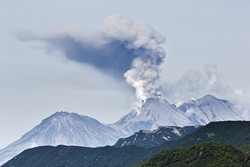Volcanoes, aerosols and climate
Aerosols are minute particles suspended in the atmosphere up to the stratospheric layer. These particles interact both directly and indirectly with the Earth's radiation budget as well as our planet's climate. The aerosols scatter sunlight back into space and act as sites for chemical reactions. Significant evidence indicates that during volcanic eruptions large amounts of sulfuric gases are injected into the stratosphere, where they convert to sulphate aerosols. Not surprisingly, the impact of aerosols on incoming solar radiation changes depending on the level of volcanic activity. The EU-funded project MIMOSA-5 (Monitoring and modelling of stratospheric aerosols with a focus on the impact of volcanic eruptions) has developed powerful tools to investigate, monitor and predict all these changes. Specifically, the Model for Stratospheric Aerosols (MOSTRA), a 4D model based on the transport and the microphysical description of aerosol particles, has been extended. The model input includes aerosol parameters such as size distribution, composition and extinction coefficients. MIMOSA-5 scientists retrieved aerosol data from the observations of the Global Ozone Monitoring by Occultation of Stars (GOMOS) instrument. This atmospheric chemistry instrument forms part of the payload of the European Space Agency's (ESA) Envisat mission. Available algorithms were utilised and new dedicated tools developed to convert GOMOS readings into scientific data of parameters representative of the Earth's atmosphere. The significant improvements in the GOMOS scientific data products have rendered them a reference data set for validation purposes. The collaboration has resulted in an inventory of the global aerosol load from small, medium and large volcanic eruptions. The latest results show that the new estimate of the aerosol load, including GOMOS data from the climate data records produced in Aerosol_CCI with supporting activities from MIMOSA-5, is able to reproduce much better the observed evolution of the global radiative forcing than previous estimates. Efforts devoted to improving the GOMOS data products have provided an opportunity to further our current understanding of the chemistry of the Earth's atmosphere. The MIMOSA-5 project has demonstrated that 4D models can offer valuable insights into how the Earth's atmosphere evolves in space and time.







